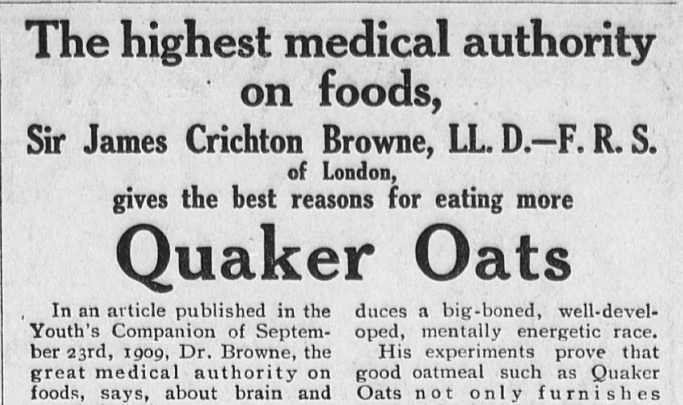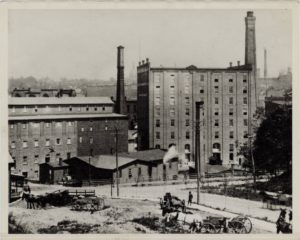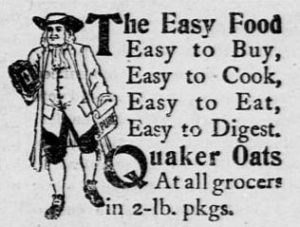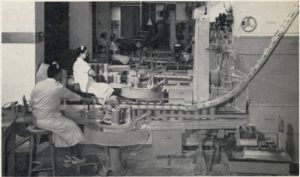Quaker Oats: “The Easy Food”

Some of us remember our parents insisting that we eat a good breakfast because it’s “the most important meal of the day.” Did you know that one of the most successfulbreakfast food companies in the country started right here in Ohio? What we now know as the Quaker Oats Company has its origins in Akron, Ohio, and a story of economic success that shaped manufacturing, marketing and advertising models in America. The story of the Quaker Oats Company begins in Akron, where German immigrantFerdinand Schumacher, also known as the “Oatmeal King,” founded German Mills American Cereal Company in 1850. He used medieval milling techniques to manufacture oatmeal on a mass scale, especially at his “Jumbo” plant in Akron, which sold 360,000 pounds of oatmeal daily at its peak.

Appalled by the hearty, excessive breakfasts popular in the mid-1800s, Schumacher single-handedly introduced oatmeal to America’s breakfast table as a viable meat substitute that was inexpensive, nutritious, filling, and easily prepared. These qualities were immensely attractive to the modern housewife and sales soared.
While Schumacher was taking the oatmeal market by storm, several smaller, but prosperous, oatmeal operations cropped up throughout Ohio and the Midwest. Among these were Robert Stuart in Chicago and Iowa, and Henry Parsons Crowell in Ravenna, Ohio. Crowell managed a milling company called Quaker Oats, which was the first oatmeal manufacturer to oversee the production process from raw crop to retail distribution. Crowell’s product was stamped with the iconic Quaker mascot, which in 1877was the first registered trademark for a cereal brand. The Quaker mascot was chosen to illustrate that Quaker Oats andits products emulated the revered qualities of the Quakers: integrity, frugality, and order.

Schumacher’s domination of the industry was snuffed out when a massive fire consumedhis Jumbo plant in 1886. With his main plant gone, and most of his oat supply destroyed, uninsured Schumacher lost everything. But although this conflagration was devastating for Schumacher, the event allowed smaller mills, like Crowell’s, to take on a more prominent role in the market and to make a name for themselves.
However, Schumacher was able to regain his wealth after joining The Oatmeal Millers Association, and he later became president of the American Cereal Company, a consolidation of the seven largest oatmeal mills in the country. In 1901, the Quaker Oats Company was formed by a merger of Schumacher’s German Mills American Oatmeal Company, Crowell’s Quaker Oats Company in Ravenna, Stuart’s Mill in Cedar Rapids, Iowa, and the Rob Lewis & Co. American Oats and Barley Corporation.

2017 marks Quaker Oats’ 140th anniversary, and the company continues to produce a variety of breakfast and grain-based food products, such as granola bars, puffed rice and wheat, Life cereal, cornmeal and barley. Look through Ohio Memory to see photographs of Quaker Oats plants and aWorld War II poster that encourages youngsters to eat more oatmeal, cornmeal, and hominy to conserve the country’s wheat supply. Check out Chronicling America for some news stories on the health benefits of oatmeal as well assome fun recipes!
Thanks to Kristen Newby, metadata coordinator at the Ohio History Connection, for this week’s post!



Leave a Reply
You must be logged in to post a comment.